
Students will practice conversing with each other and answering basic questions about themselves.
- Subject:
- Languages
- Material Type:
- Activity/Lab
- Author:
- Camille Daw
- Amber Hoye
- Date Added:
- 11/18/2020

Students will practice conversing with each other and answering basic questions about themselves.

In this activity, students will talk about their summer. They will also introduce themselves and get to know the rest of their lab/group mates. Students will finish the lab by playing a speeddating game.

En este curso el estudiante perfeccionará su comunicación oral y escrita mediante el estudio y la discusión de temas relacionados al impacto social y cultural de la ciencia y la tecnología en ciertas sociedades hispanas. Algunos de los temas a tratar son los efectos de los cambios tecnológicos en la estructura familiar y comunitaria, en las relaciones entre los sexos, en la identidad personal y cultural, en el mundo natural y en los sistemas de valores, la religión, la educación y el trabajo. También se examinan y discuten diversas actitudes hacia la innovación tecnológica y científica así como las ramificaciones éticas de las decisiones tecnológicas.
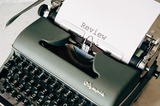
In this activity, students will review some of the topics they were practicing in the past activities, such as, how to talk about themselves and others, How to ask and answer daily simple questions, and how to engage in a basic conversation in Arabic.Can-Do Statements:I can introduce myself and others in Arabic.I can ask and answer daily simple questions in Arabic.I can engage in a basic conversation with a partner in Arabic.

In this lab students will share their interpretations on artwork. They will discuss how they can talk about art and express their opinion with a partner or in a group. Students will answer questions across different time frames (past, present, future).
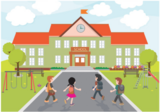
In this activity, students will practice studying school vocabulary. They will also be able to respond to simple questions related to school. Students will also practice identifying school related vocabulary by looking at pictures. They will also be able to write a full sentence in Arabic using the vocabulary they are given individually.
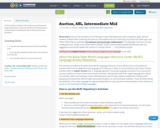
In this activity, students will continue practicing their fingerspelling as a warm up. Students will then play an auction game to familiarize them with products and numbers.
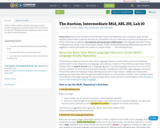
In this activity, students will have the opportunity to practice using money and math skills to bid on items in an "auction". Students will also experience what actions are like for Deaf individuals.
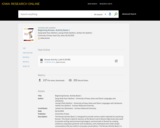
The Korean Activity Book 1 is designed to provide various useful materials for practicing Korean. This book is ideal for learners at the Novice Low to Novice High levels who want to practice writing and pronouncing hangeul, communicate in Korean by creating sentences using basic grammar and vocabulary, and understand and create simple conversations that are useful in everyday conversations. The Korean Activity Book 1 is not a textbook, so it does not include lengthy explanations on grammar or vocabulary. However, it includes a lot of resources of natural conversations and useful vocabularies that are commonly used in contemporary Korean. It also includes useful tips to clarify confusing structures and words & expressions to novice level learners.

Better Arguments can help students learn to engage productively across differences and grapple with differing viewpoints. Linked are resources that are applicable to school-based learning activities and after school programs. These include a curriculum, exit ticket exercise and current events exercise.
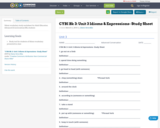
Idiom vocabulary study worksheet for Adult Education Advanced (Conversation) ESL students

This course is the intermediate level of the streamlined curriculum, which is intended for students who, when they began streamlined I, had some background in the language, whether it be comprehension with limited speaking ability or quite fluent speaking ability. The focus of the course is on standard pronunciation and usage, on reading in both complex and simplified characters, and on writing. It is presupposed that students in Chinese III have already learned the pinyin system of representing pronunciation sufficiently well to be able to read texts in pinyin accurately. (If not, there are pinyin tutorials to assist you to learn the system.)

This is the second semester of the intermediate level sequence intended for students whose conversational ability exceeds their reading and writing skills. Focus is on reading and writing, as well as broadening conversational skills and control of standard pronunciation, for students with background in conversational Chinese. Lab work is required. On completing this course, students should be able to speak the language with standard pronunciation, to converse with some fluency on everyday topics, as well as on some specialized topics, to read edited, as well as authentic texts, in simplified or traditional characters with suitable fluency, and to be able to write composition on certain topics. The class consists of a combination of practice, reading, discussion, dictation, composition and feedback, net exploration via the web, and presentation. This course is conducted in Mandarin.

This course is the continuation of 21G.104/108. It is designed to further help students develop sophisticated conversational, reading and writing skills by combining traditional textbook material with their own explorations of Chinese speaking societies, using the human, literary, and electronic resources available at in the Boston area. Some of special features of Chinese society, its culture, its customs and habits, its history, and the psychology of its people are be introduced. The class consists of reading, discussion, composition, network exploration, and conversational practice. The course is conducted in Mandarin.

Students will be choosing and defending their opinions on a variety of cinematic topics. Students will also practice discussing opinions other than their own.

Students will play a game regarding a wide variety of topics to further their conversation skills. Students will describe objects using descriptors to work on fingerspelling
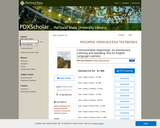
This textbook is designed for beginning-intermediate English language learners. It is composed of 7 chapters, each of which covers specific speaking and listening learning objectives and includes dialogues, interviews, discussions and conversation activities. Each chapter includes listening and speaking components such as dialogues, interviews, discussions and conversation activities. Each chapter also focuses on 10 target words from the New General Service List of English vocabulary. The textbook includes an audio component that consists of recorded conversations of native and non-native English speakers, as well as links to additional listening resources on the web.
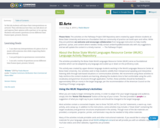
In this lab students will share their interpretations on artwork. They will discuss how they can talk about art and express their opinion with a partner or in a group. Students will answer questions across different time frames (past, present, future).
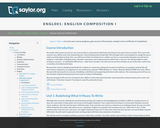
This course promotes clear and effective communication by sharpening critical thinking and writing skills. The first unit is designed to change the way in which students think about writing--as a conversation rather than a solitary act. The second unit focuses on academic writing and explores the PWR-Writing or Power-Writing Method (PWR Pre-Write, Write, Revise). The remaining units will focus on the minutiae of good writing practices, from style to citation methodology. Upon successful completion of this course, the student will be able to: Demonstrate mastery of principles of grammar, usage, mechanics, and sentence structure. Identify the thesis in another individual's essay. Develop a thesis statement, structure it in an introductory paragraph, and support it with the body of the essay. Organize ideas logically within an essay, deploying adequate transitional devices to ensure coherence, flow, and focus. Differentiate between rhetorical strategies and write with an awareness of rhetorical technique and audience. Differentiate between tones and write with an awareness of how tone affects the audience's experience. Demonstrate critical and analytical thinking for reading and writing purposes. Quote, paraphrase, and document the work of others. Write sentences that vary in length and structure. (English 001)

Students will learn how to quote what someone else said. They will be able to explain their conversation with a friend to another person.